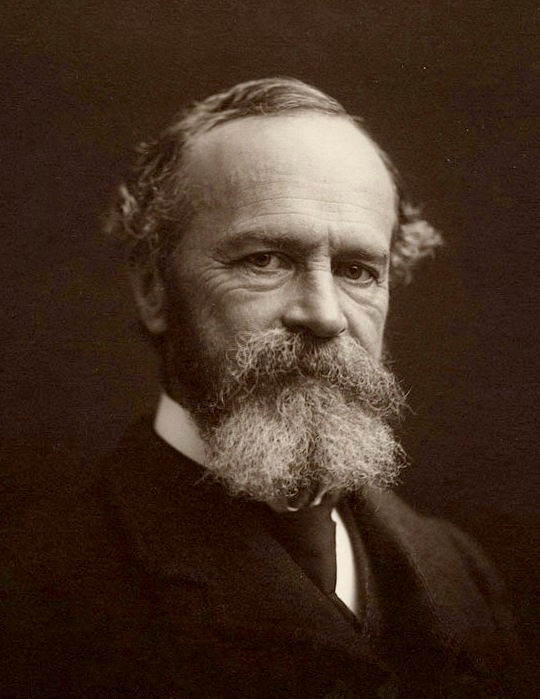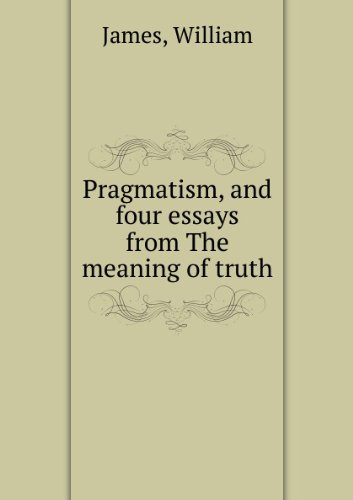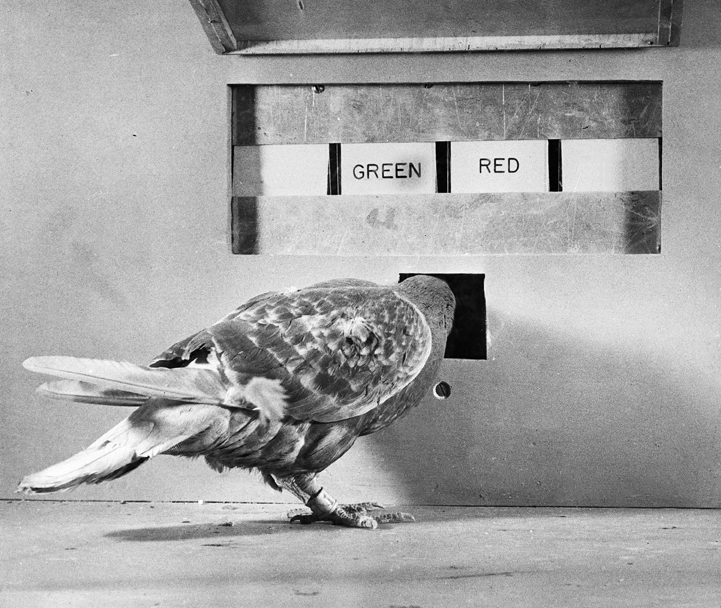Differences 101
I love William James’s observation that, “there can be no difference anywhere that doesn’t make a difference elsewhere – no difference in abstract truth that doesn’t express itself  in concrete fact and in conduct consequent upon that fact, imposed on somebody, somehow, somewhere, and somewhen” (William James, Pragmatism, Meridian Books, 1907/1963, Chapter 2, page 45). It is so pragmatic. And so eloquent: a difference is only a difference if it makes a difference. But what did James mean, and what are its implications for behavior analysis?
in concrete fact and in conduct consequent upon that fact, imposed on somebody, somehow, somewhere, and somewhen” (William James, Pragmatism, Meridian Books, 1907/1963, Chapter 2, page 45). It is so pragmatic. And so eloquent: a difference is only a difference if it makes a difference. But what did James mean, and what are its implications for behavior analysis?
To appreciate the comment, you have to remember that he said it in a book defining the philosophy of pragmatism. For James, truth was not an abstract ideal toward which we all strive. Truth was to be found in our daily lives, in the things that matter to each of us as individuals. If something doesn’t matter to us – if it doesn’t make a difference in our conduct (read: behavior) - then it can’t be useful. It can’t be true.
 Pragmatism, then, is all about things that make a difference to the individual. Think about an (individual) pigeon pecking a key that sometimes is red and sometimes green. Does it matter to our fine feathered friend what color the light is? If it does, it doesn’t show up in his behavior because he pecks (in my hypothetical example) exactly the same in both colors and gets exactly the same food in both when he does peck. Even though you and I might say, “whoa, there is a difference between red and green,” (because we have been taught to use different words to describe the two colors) it doesn’t make a difference to the pigeon, IF we take his behavior as the measure of “making a difference.”
Pragmatism, then, is all about things that make a difference to the individual. Think about an (individual) pigeon pecking a key that sometimes is red and sometimes green. Does it matter to our fine feathered friend what color the light is? If it does, it doesn’t show up in his behavior because he pecks (in my hypothetical example) exactly the same in both colors and gets exactly the same food in both when he does peck. Even though you and I might say, “whoa, there is a difference between red and green,” (because we have been taught to use different words to describe the two colors) it doesn’t make a difference to the pigeon, IF we take his behavior as the measure of “making a difference.”
Now, take away the opportunity for food in the presence of one of the colors and what happens to the behavior, the pecking, in that color? Does the difference make a difference now? You bet it does, because he stops pecking in the color no longer associated with reinforcement (but of course keeps on pecking in the other color).
You can probably see where this is headed.
 Differences are a matter of perspective. I look at two quarters and they seem just the same to me, the small differences don’t matter to me in that I behave the same way toward both coins. An experienced numismatist looks at the two coins and finds that one has an unusual mint mark on it that makes it worth six thousand times the other. To me, the difference didn’t make a difference (oh that it had, I would be richer if not wiser), but to my coin-hugging colleague, it did (and he is driving the new Porsche).
Differences are a matter of perspective. I look at two quarters and they seem just the same to me, the small differences don’t matter to me in that I behave the same way toward both coins. An experienced numismatist looks at the two coins and finds that one has an unusual mint mark on it that makes it worth six thousand times the other. To me, the difference didn’t make a difference (oh that it had, I would be richer if not wiser), but to my coin-hugging colleague, it did (and he is driving the new Porsche).
 A skilled therapist has learned to make fine discriminations in the behavior of her client that tells her when the child may be getting ready to run away that you or I may not see. She therefore may be able to take preemptive action to prevent the running-away attempt, but you or I would be less likely to do so. The difference in the child’s behavior makes a difference in terms of her own behavior, but that “difference” in the child’s actions does not make a difference in terms of your and my behavior. So for us, at least, the child’s behavior is not different in the resting and pre-running-away conditions.
A skilled therapist has learned to make fine discriminations in the behavior of her client that tells her when the child may be getting ready to run away that you or I may not see. She therefore may be able to take preemptive action to prevent the running-away attempt, but you or I would be less likely to do so. The difference in the child’s behavior makes a difference in terms of her own behavior, but that “difference” in the child’s actions does not make a difference in terms of your and my behavior. So for us, at least, the child’s behavior is not different in the resting and pre-running-away conditions.
Beyond these examples, James’s insight is one of the first observations about the difference between the form of something and its effect on behavior (note his use of the word “conduct” in the quote) – the difference between structure or form and function. James is all about function – a nominal difference between things only makes a difference when the nominal difference leads to a behavioral difference. As such, he anticipates much of what many years after him becomes modern behavior analysis.



